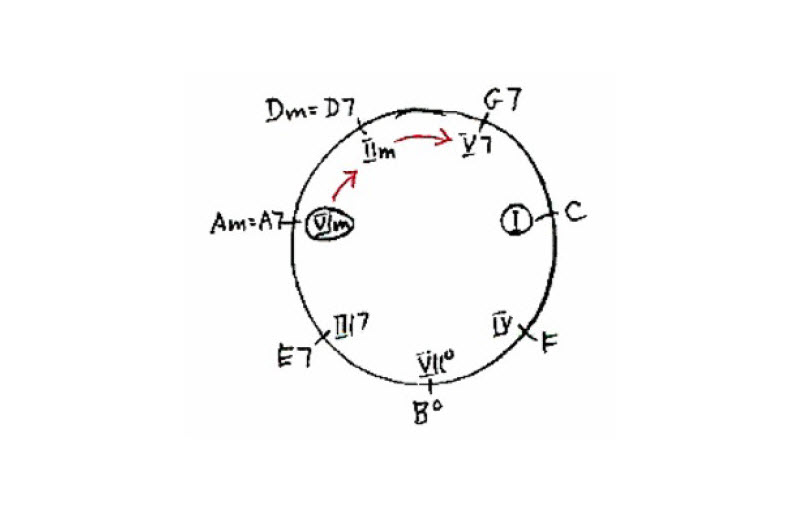You Are Reading the First 6 FREE Chapters (470 pages)
Chord Variations, Secondary Dominants, and Tonicization
A chord variation is a chord having the same root (letter-name) as the default chord at any of the seven positions around a circular harmonic scale. For example, in Figure 69 below, at the IIm position, Dm is the default chord. However, you could substitute any other chord beginning with the letter D at the IIm position, such as D7, Dsus4, Dm7, D9, D13x9, etc. (Chord progressions are combinatorial.) Some of these chords are further classified into categories such as borrowed chords and altered chords.
In Figure 69, the default chord in the IIm position is Dm. To make this a secondary dominant, you substitute the chord variation D7 in place of the usual Dm chord. The chord D7 then becomes the secondary dominant of G7.

FIGURE 69: Chord Map of Secondary Dominants
A secondary dominant creates tonicization (discussed in Chapter 5)—it briefly "tonicizes" a chord other than the tonic (makes it sound like it's the tonic). Examples coming up will show you how secondary dominants are used in songs.

